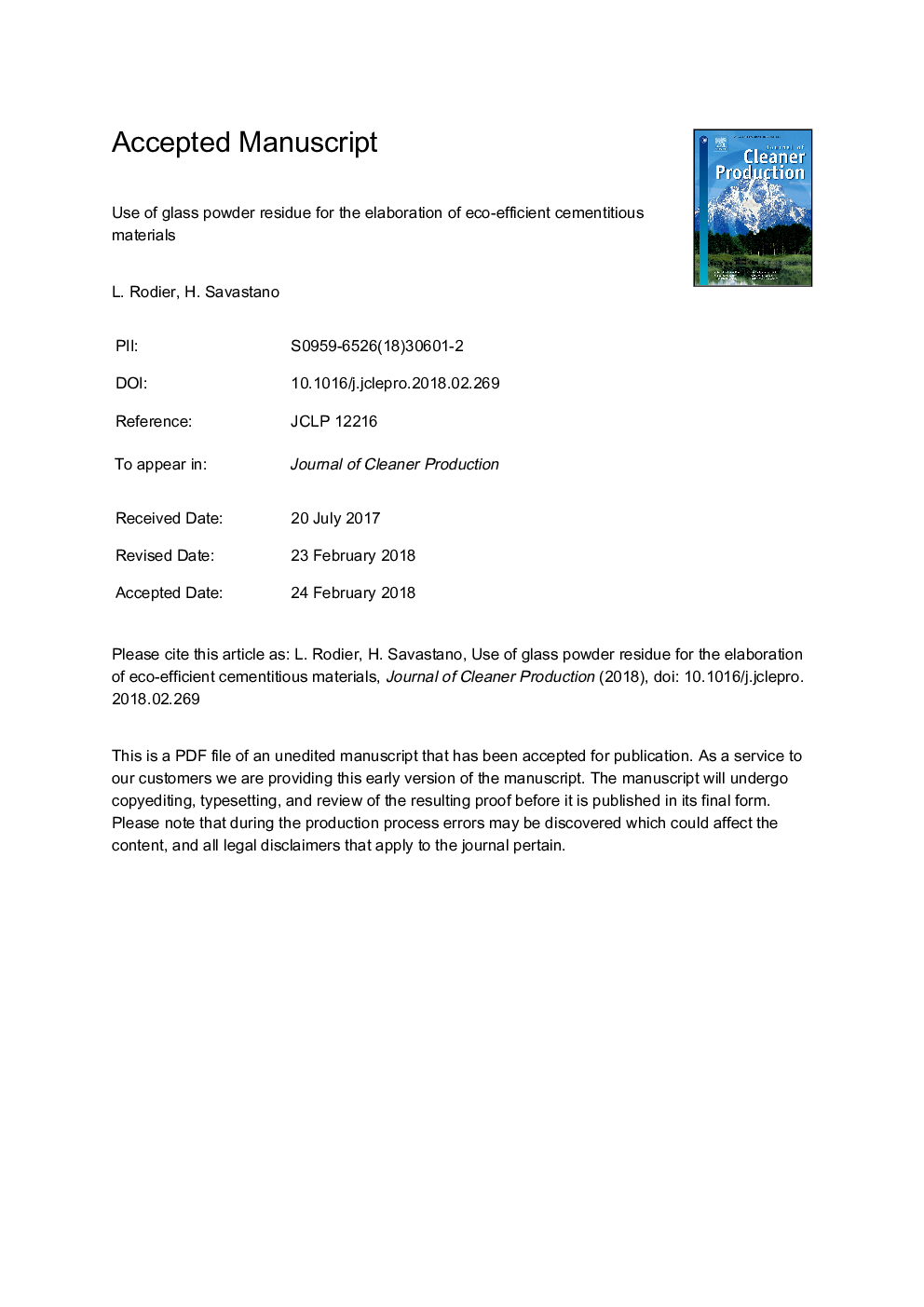| Article ID | Journal | Published Year | Pages | File Type |
|---|---|---|---|---|
| 8096691 | Journal of Cleaner Production | 2018 | 26 Pages |
Abstract
The glass powder is a waste resulting of the manufacturing process of flat glass (regular glass). This study evaluates the eco-efficiency of cement production using glass powder residue as partial replacement of cement. The glass powder residue (GPR) was used as partial replacement up to 50% by weight in cement pastes to evaluate the potential use of this matrix for application in fiber cement composites. For mortar specimens, the percentage of substitution of cement (up to 20% by weight) was used to evaluate the applicability of the glass powder in masonry construction. Primarily, several experiments such as thermogravimetric analysis, compressive strength tests, pozzolanic activity and durability tests were carried out to evaluate the potential use of GPR in cement industry. Secondly, to evaluate the eco-efficiency of the material elaborated, the energy demand of cement partially replaced by glass powder residue and the energy performance of mortars were calculated using mathematical equations. The results showed that GPR presents a pozzolanic activity and a free calcium hydroxide cement matrix is obtained when the ordinary Portland cement is partially replaced by 50% by weight of GPR in cement pastes. Moreover, the partial replacement of cement by 10% by weight of GPR leads to an increase of physico-mechanical properties of mortars. Finally, the energy consumption per MPa of mortars partially replaced by GPR (10 and 20% by weight) is lower than the one of original Portland cement suggesting the eco-efficiency of GPR for applications in cement production and the elaboration of cementitious materials. According to the results of the study, the residue from polishing process of flat glass can be used for the elaboration of green cement and eco-efficient cementitious materials.
Related Topics
Physical Sciences and Engineering
Energy
Renewable Energy, Sustainability and the Environment
Authors
Loïc Rodier, Holmer Jr.,
